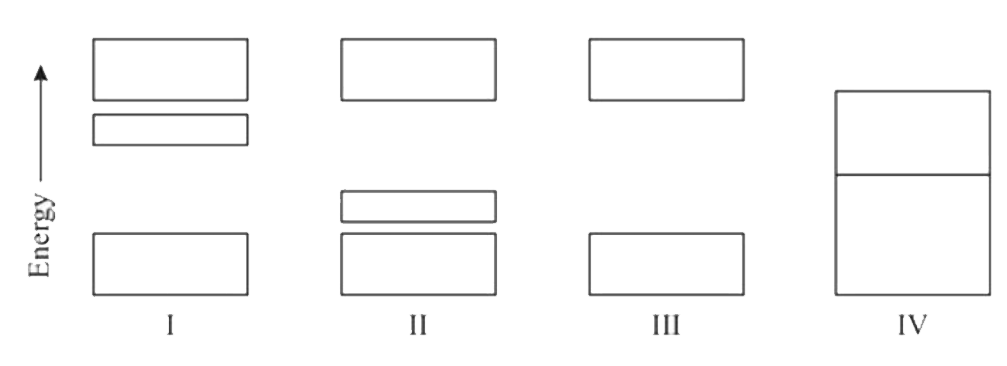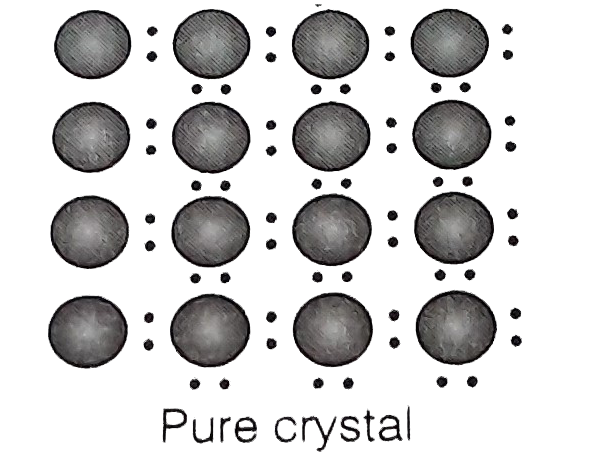When added an impurity into the silicon which one of the following produces n-type of semiconductors?
P
As
B
Mg
The correct Answer is:A
To determine which impurity produces an n-type semiconductor when added to silicon, we can follow these steps:
Step 1: Understand the Structure of Silicon
Silicon (Si) is a group 14 element with 4 valence electrons. It forms covalent bonds with other silicon atoms, creating a crystal lattice structure.
Hint: Remember that silicon has 4 valence electrons, which allows it to form 4 bonds in its crystal structure.
Step 2: Identify the Type of Impurity
To create an n-type semiconductor, we need to add an impurity that has more valence electrons than silicon. This means we should look for a group 15 element, which has 5 valence electrons.
Hint: Look for elements in the periodic table that belong to group 15, as they have 5 valence electrons.
Step 3: Choose the Right Impurity
Phosphorus (P) is a group 15 element with 5 valence electrons. When phosphorus is added to silicon, it donates one extra electron that does not participate in bonding with the silicon atoms.
Hint: Phosphorus is a common choice for doping silicon to create n-type semiconductors due to its extra electron.
Step 4: Explain the Doping Process
When phosphorus is doped into silicon, four of its five valence electrons are used to form bonds with the silicon atoms. The fifth electron becomes free, contributing to electrical conductivity.
Hint: Remember that the extra electron from phosphorus is what makes the semiconductor n-type, as it increases the number of negative charge carriers (electrons).
Step 5: Conclusion
Thus, the impurity that produces an n-type semiconductor when added to silicon is phosphorus.
Final Answer: Phosphorus (P) produces an n-type semiconductor when added to silicon.
Silicon (Si) is a group 14 element with 4 valence electrons. It forms covalent bonds with other silicon atoms, creating a crystal lattice structure.
To create an n-type semiconductor, we need to add an impurity that has more valence electrons than silicon. This means we should look for a group 15 element, which has 5 valence electrons.
Phosphorus (P) is a group 15 element with 5 valence electrons. When phosphorus is added to silicon, it donates one extra electron that does not participate in bonding with the silicon atoms.
When phosphorus is doped into silicon, four of its five valence electrons are used to form bonds with the silicon atoms. The fifth electron becomes free, contributing to electrical conductivity.
Thus, the impurity that produces an n-type semiconductor when added to silicon is phosphorus.
Topper's Solved these Questions
- SEMICONDUCTORSBOOK - RESONANCE ENGLISHCHAPTER - SEMICONDUCTORSEXERCISE - Exercise 2
16 Videos
- REVISION DPPBOOK - RESONANCE ENGLISHCHAPTER - REVISION DPPEXERCISE - All Questions
463 Videos
- SIMPLE HARMONIC MOTION BOOK - RESONANCE ENGLISHCHAPTER - SIMPLE HARMONIC MOTION EXERCISE - Advanced Level Problems
13 Videos
Similar Questions
n-type semiconductor is
View SolutionWhat are n-type semiconductors ?
View SolutionA N - type semiconductor is
View SolutionWhich of the following can produce silicon.
View SolutionWhen N-type of semiconductor is heated
View SolutionIn an n-type silicon, which of the following statement is true :
View SolutionWhat are n-type and p-type semiconductors?
View SolutionThe band structure in n - type semiconductor is

View SolutionA perfect crystal of silicon (fig) is doped with some elements as given in the options , which of these options shows n- type semiconductors ?

View SolutionWhat are p-type and n-type semiconductors?
View Solution
